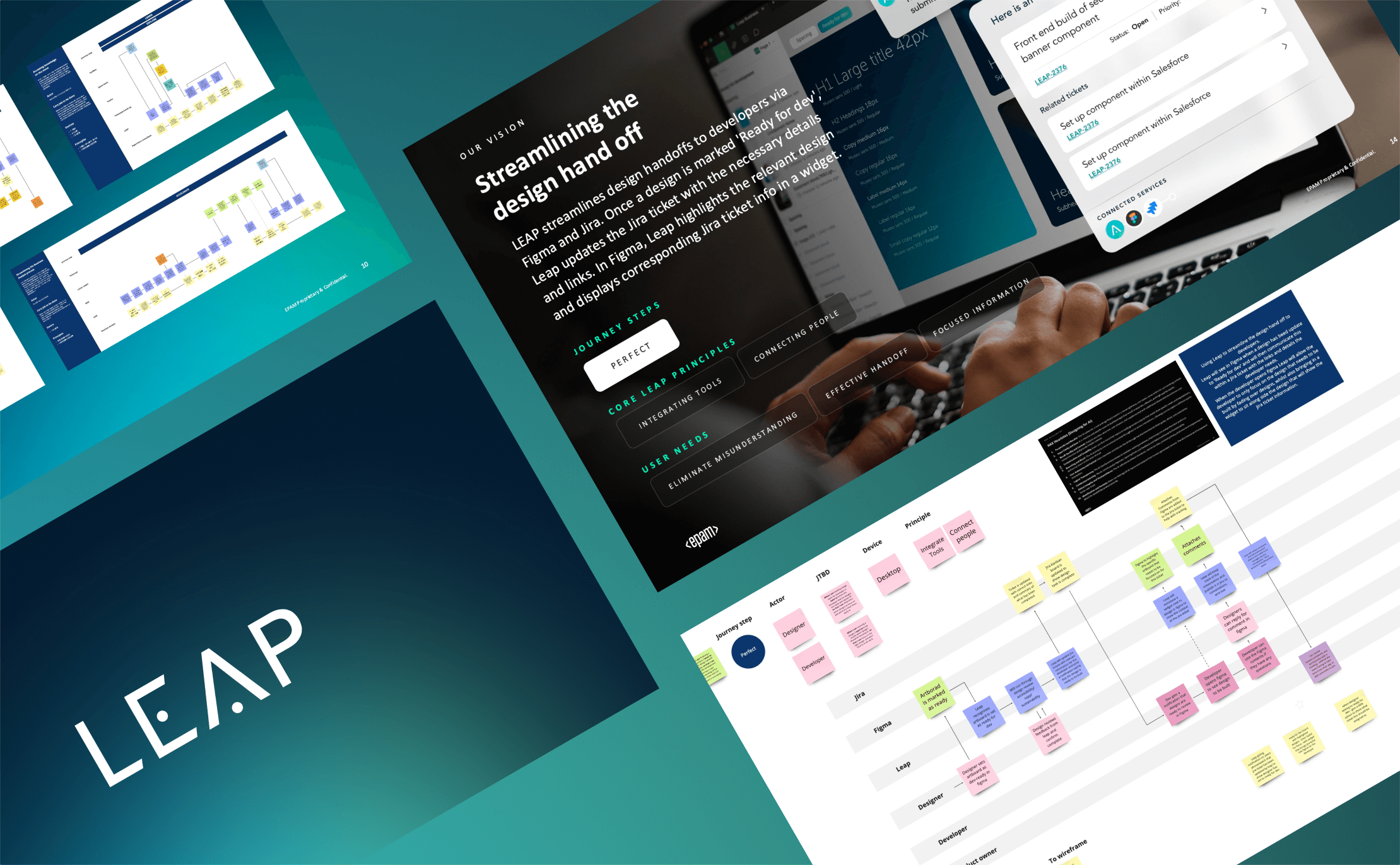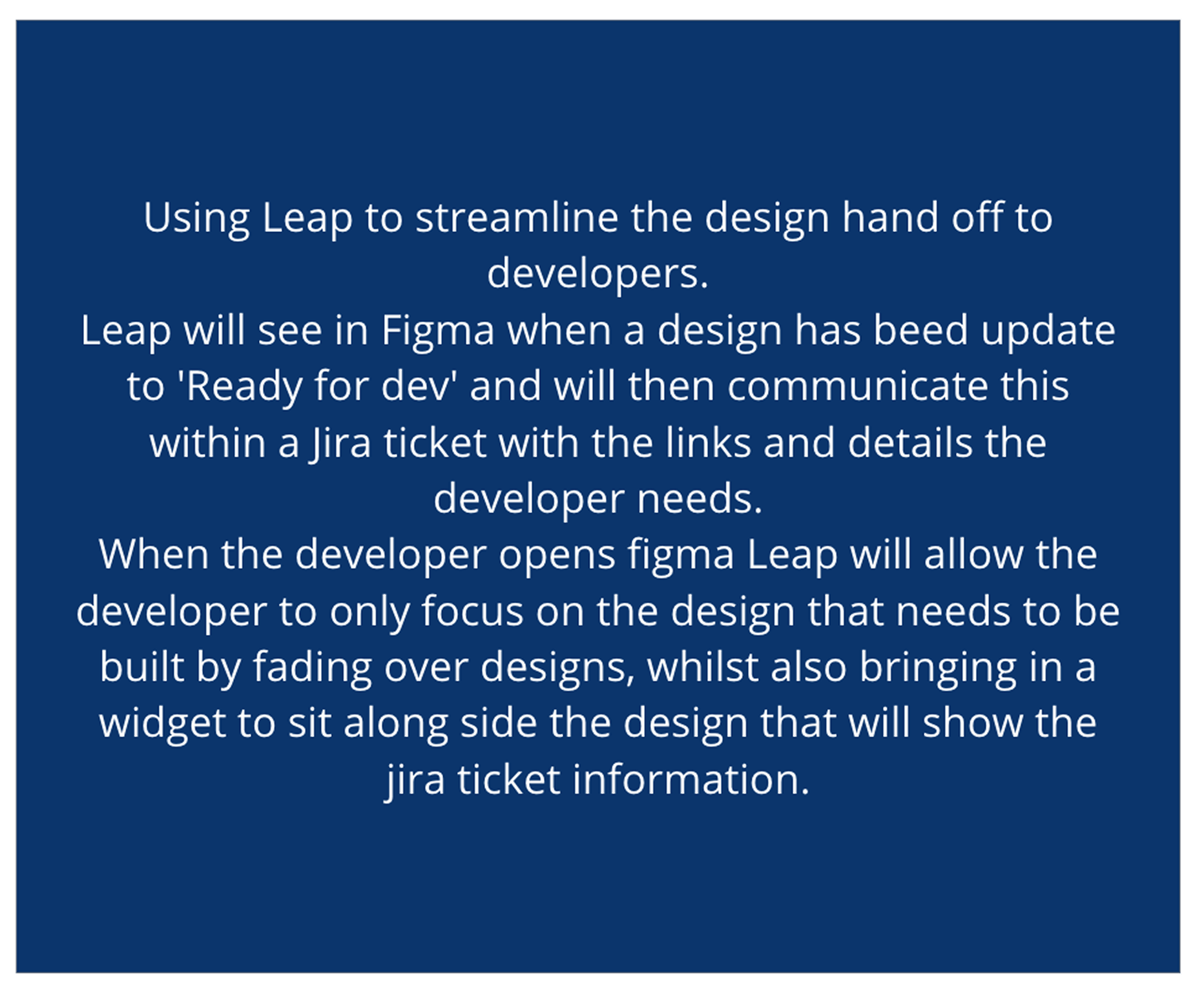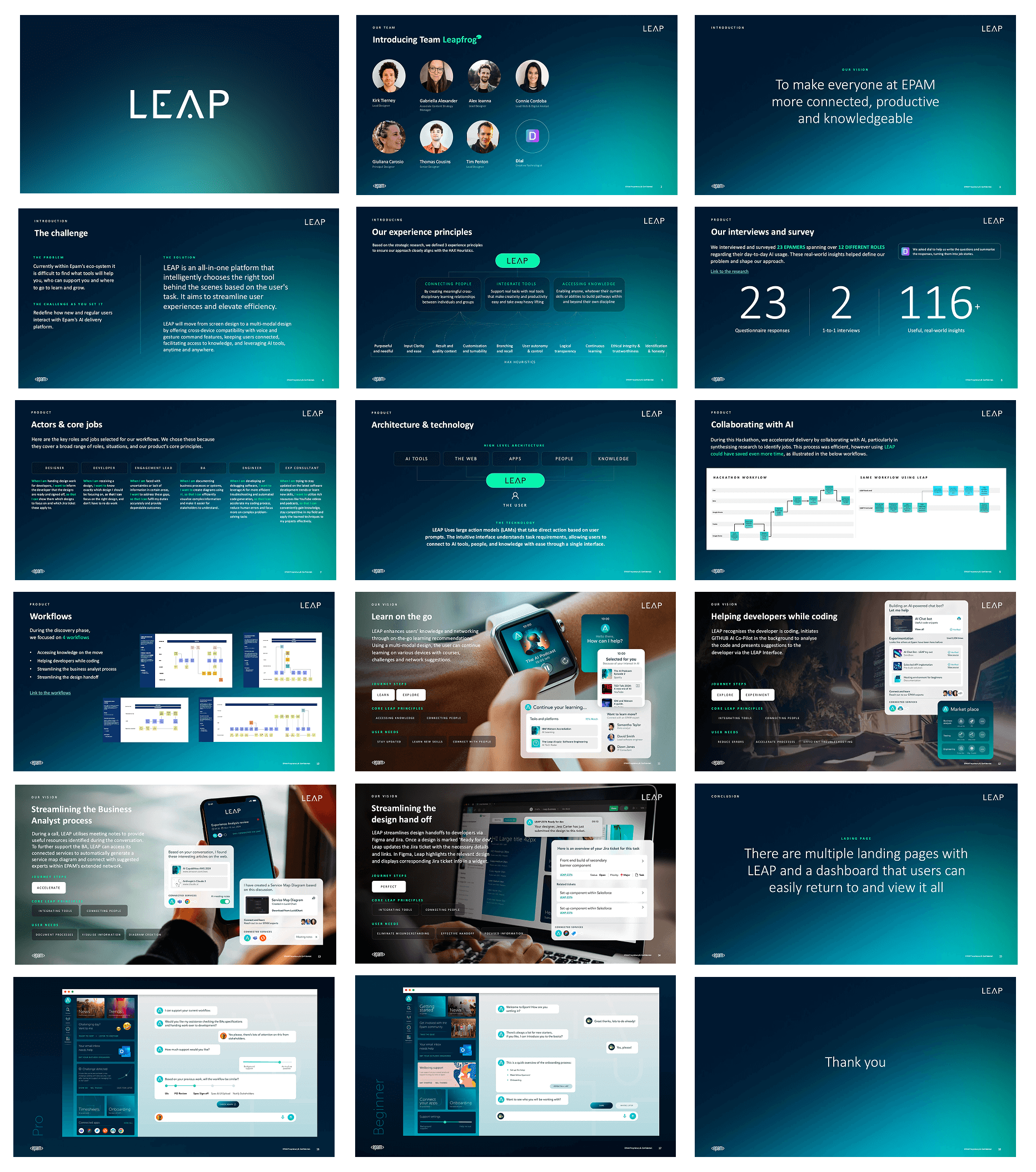LEAP: AI Collaboration Hackathon
Using AI to connect people, tools, and disciplines. Streamlining how EPAM teams work, learn, and grow.
The project: A week-long internal hackathon exploring how AI could improve collaboration and reduce friction between teams.
My Role: Led the designer-to-developer journey. Mapping pain points, creating a service blueprint, and designing an AI workflow to connect Figma and Jira.
Result: Awarded 2nd place out of 15 teams for a forward-thinking vision of how AI could unify EPAM’s tools and workflows.
Skills used: AI Concept Ideation • Service Blueprinting • Journey Mapping • Cross-discipline Collaboration • Workflow Automation • Systems Thinking • UX Strategy
Project
LEAP was a week-long internal hackathon at EPAM focused on exploring how AI could solve everyday challenges within the organisation, helping connect people, tools, and disciplines to improve collaboration and learning.
Our team of seven, made up of analysts, content strategists, and designers, came together to reimagine how EPAM’s internal ecosystem could work smarter, not harder.
The Problem
Across EPAM, teams often work in silos, using different tools, processes, and workflows. This creates friction when moving between disciplines, from designers, developers, business analysts, and engineers each rely on separate systems with limited visibility or integration.
The challenge: How might we align our tools to help teams learn, grow, and streamline their processes, using AI as the connective tissue between them?
My Role
I focused on the designer-to-developer handover journey, mapping out the problem statement and creating a service blueprint that illustrated how AI could connect our key tools such as Figma, Jira, and project tracking dashboards to enable real-time collaboration.
My responsibilities included:
Mapping the designer to developer workflow and pain points.
Designing the service blueprint for AI-driven integration.
Exploring how automation and intelligent checks could reduce manual tasks.
Process
Working collaboratively, the team first mapped the core journeys and actors across the full product lifecycle. From designers and developers to analysts and engineers. Identifying the unique challenges each discipline faced.
Each team member then focused on a specific actor or journey within the platform to explore how AI could bridge the gaps.
For my part, the concept revolved around a smart AI layer that recognises when a Figma file is marked “Ready for Dev.” The system then:
Automatically creates or updates the Jira ticket, using the history function to compare changes and log notes.
Breaks work into sub-tasks using consistent layer naming.
Suggests story points based on estimated difficulty.
Runs an AI-powered QA check on accessibility, sustainability, and tone of voice.
Updates Kanban boards and notifies the relevant team members in real time.
Surfaces a Figma widget showing the linked Jira ticket and its latest updates.
Together, these ideas formed a vision for a connected EPAM ecosystem where design, dev, and QA tools work in harmony.
Outcome
Our concept was recognised for its potential impact and clarity of vision.
Out of 15 teams across the internal LEAP hackathon, our team was awarded 2nd place, highlighting the strength of our approach to using AI to connect people, integrate tools, and make knowledge more accessible across EPAM.





